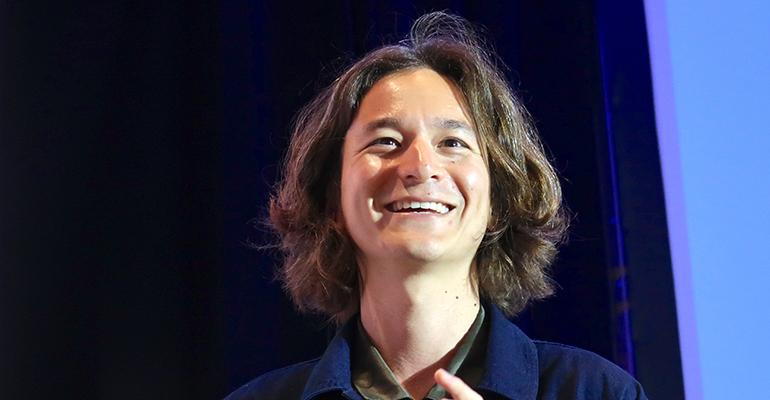As Sweetgreen passes 90 locations, the founders remain focused on making the restaurants intimate to their customers, one of the brand’s co-founders said at the recent RestaurantSpaces conference.
Nathaniel Ru, who co-founded Sweetgreen with Jonathan Neman and Nicolas Jammet in 2007, said the Los Angeles-based company is focused on creating an “intimacy of scale,” through such means as reinventing its internal scorecard to focusing on customer metrics, building responsive stores, making technology visible and finding ways to be a student of the community.
Ru spoke at February’s RestaurantSpaces conference in Miami and outlined some of the ways the fast-casual concept has achieved and measured success.
The company has received several rounds of investment, starting with a venture capital firm founded by AOL co-founder Steve Case in 2013 to a $200 million infusion by Fidelity Investments last November, and reached 91 units in eight states. It was named a Nation’s Restaurant News Breakout Brand in 2014.
Ru said the co-founders created Sweetgreen in 2007 in their dorm room at Georgetown University in Washington, D.C. with a mission of connecting more people to “real food.”
At that period a dozen years ago, he said, “You had two choices: fast, cheap and unhealthy food or slow, expensive and fresh.”
The company now works with 150 farmers and growers to supply its menus, and “almost half our business comes through digital channels,” Ru said.
Ru outlined four ingredients that help Sweetgreen stay connected to its roots as it grows.
Data measurement. “In our industry, we can cut corners and then it’s harder to maintain quality and harder to maintain that connection with guests,” Ru said, noting that the brand early on worked to get out of mindset of quarter-over-quarter sales comparisons.
“We decided to take a step back and, with the advent of technology, we’ve been able to really leverage data in a more meaningful way and start making decisions based on customers versus just the restaurant box,” Ru said.
For example, Sweetgreen looks at active users, or those who have returned to the restaurant in periods such as 30, 60 or 90 days, and measures that in cohorts and demographics as well as frequency of visits and customer satisfaction scores, Ru said.
“Make sure you are measuring the right things in your business,” Ru said. “Technology is really disrupting the restaurant space.”
Restaurant design. Sweetgreen evaluated its design after opening its 21st restaurant and looked for a format that would get it through further growth, Ru said.
The company settled on what it calls “responsive design” — or a modular approach that would serve it through further growth, Ru said.
“Almost all of our restaurants now have modular shelving, which are essential prefab shelves for the front of the house,” Ru said. “We dedicate a lot of our front-of-store space to shelves that we can install in a matter of hours.”
Sweetgreen also installed secondary lines in all its kitchen to accommodate mobile order and pickup. About half of the company’s orders come through digital channels, Ru said.
Visible Technology. “Mobile ordering is growing 80% year-over-year for us, and it’s not slowing down,” Ru said.
To make the technology more useful to both the customer and the team members, the company has reimagined basic things like receipts.
Rather than naming signature salads, for example, Ru said receipts are “deconstructed” to list all the ingredients in a salad. “That single change has increased our accuracy three times,” he said.
Technology has also helped manage labor. Sweetgreen’s oven scheduling, provided on a portable computer tablet that hangs next to the equipment, pulls in data ranging from weather and day of week to estimate what items should be baked when and by whom.
Community knowledge
Ru said that the fourth element of “intimacy of scale” relies on “becoming a student of the community.”
“How do you find moments to impact the community?” Ru asked.
During the federal government shutdown in December and January, for example, Sweetgreen provided free meals to furloughed workers.
The idea began on the company’s Slack channel and migrated to real world, Ru said.
“It was a simple thing,” he said, but the company served almost 4,000 people over two weeks.
“Finding moments to be human is really what builds brands for the future,” he added.
Ru said Sweetgreen has invested in creating a direct relationship to the customer.
“The key for us was really focusing on our mission,” Ru said. “We really truly believe fast food can make a difference. … A lot of the things we do are kind of untraditional.”
Contact Ron Ruggless at [email protected]
Follow him on Twitter: @RonRuggless





